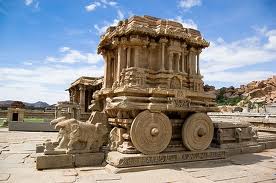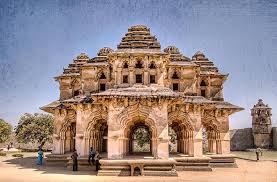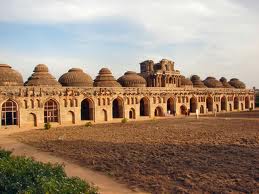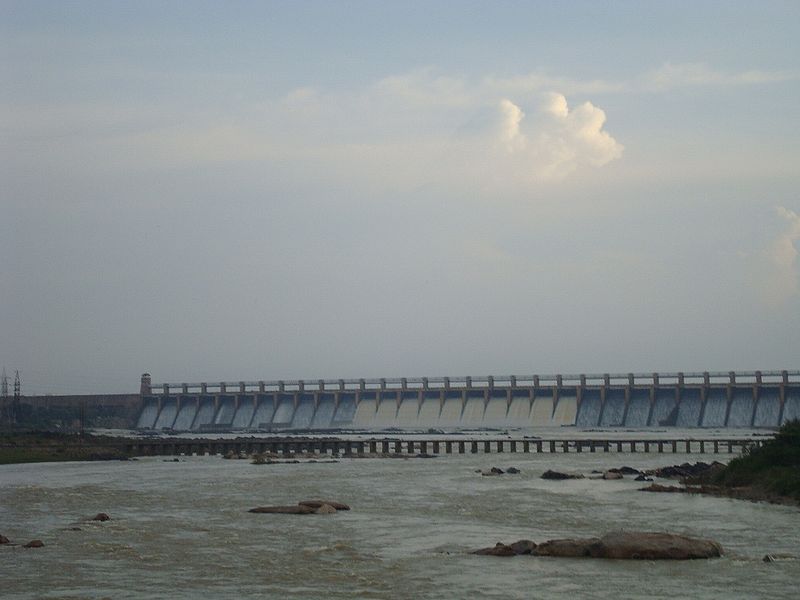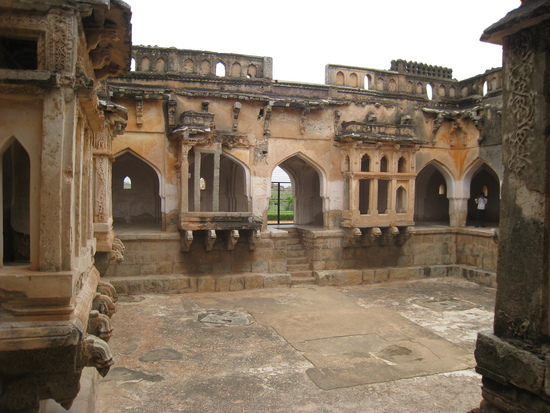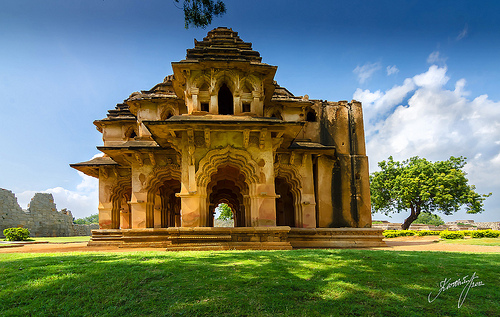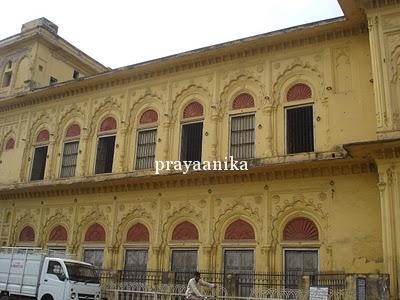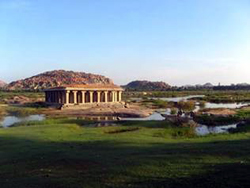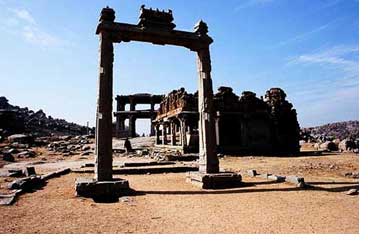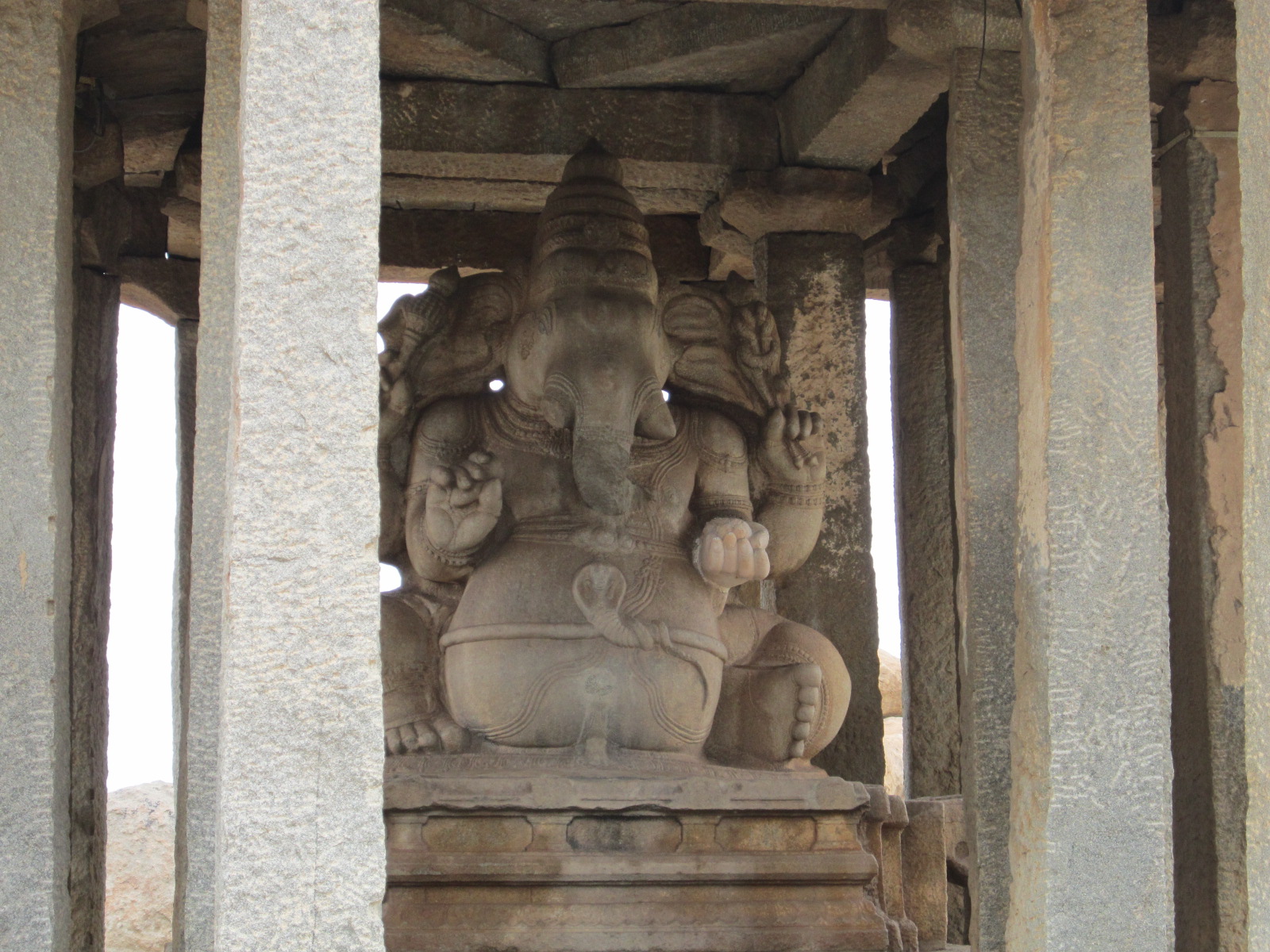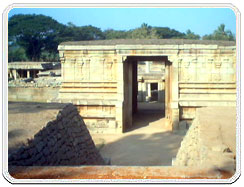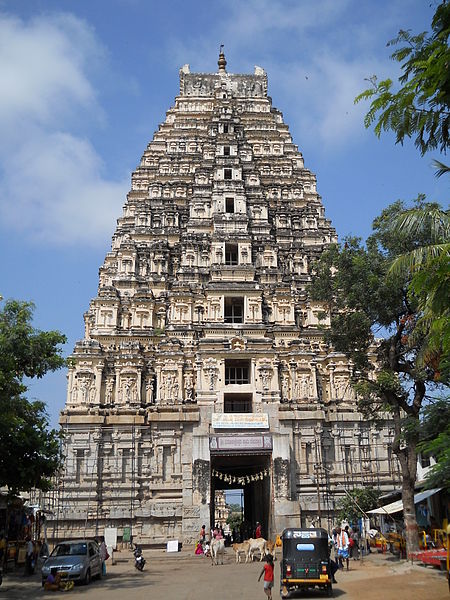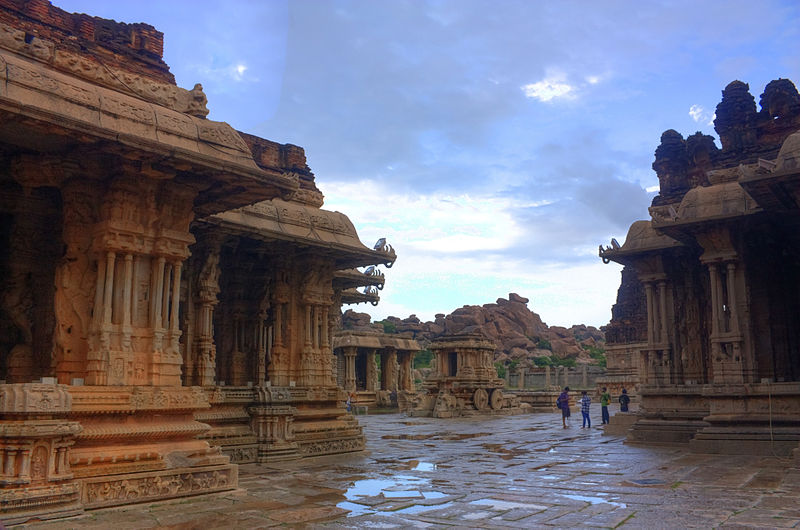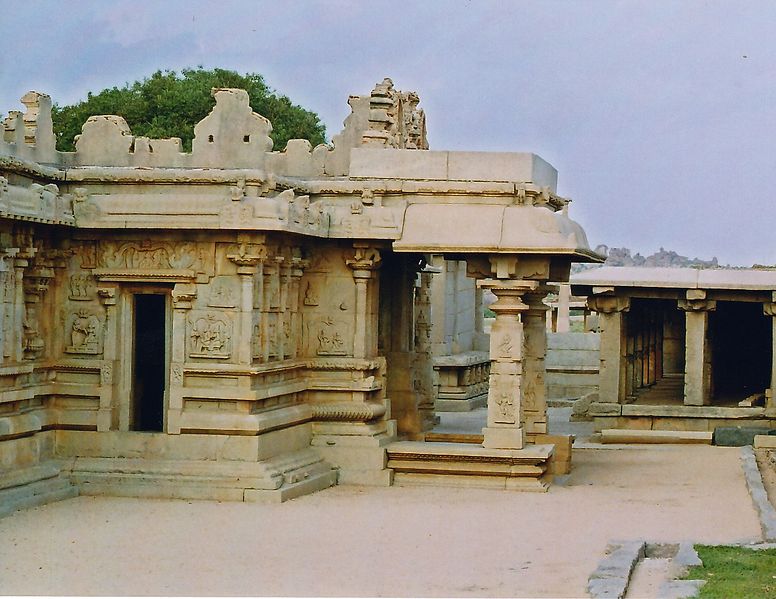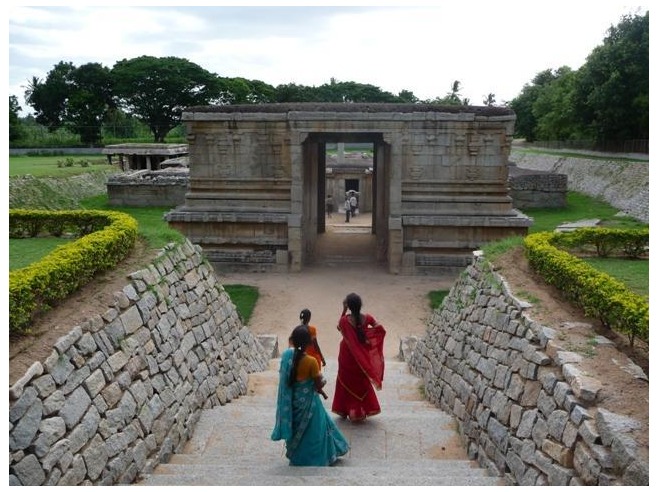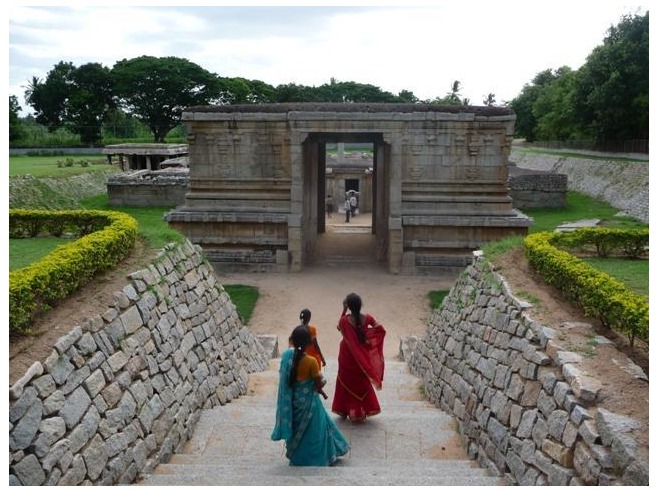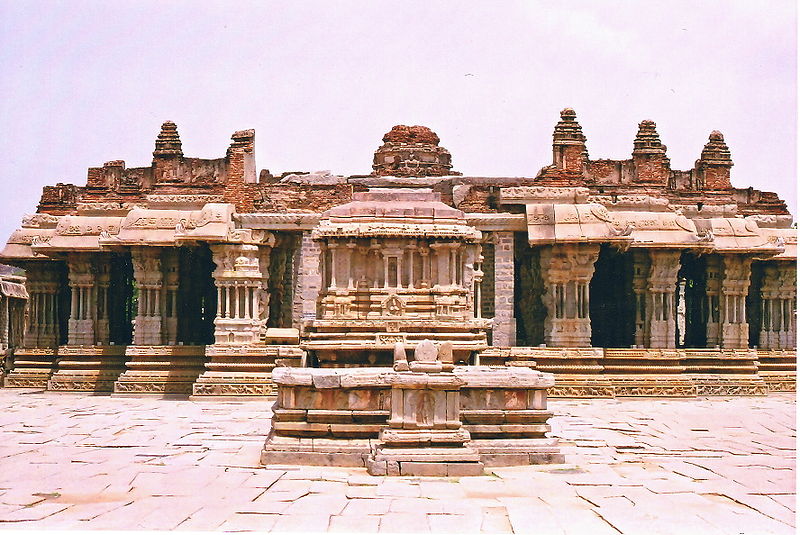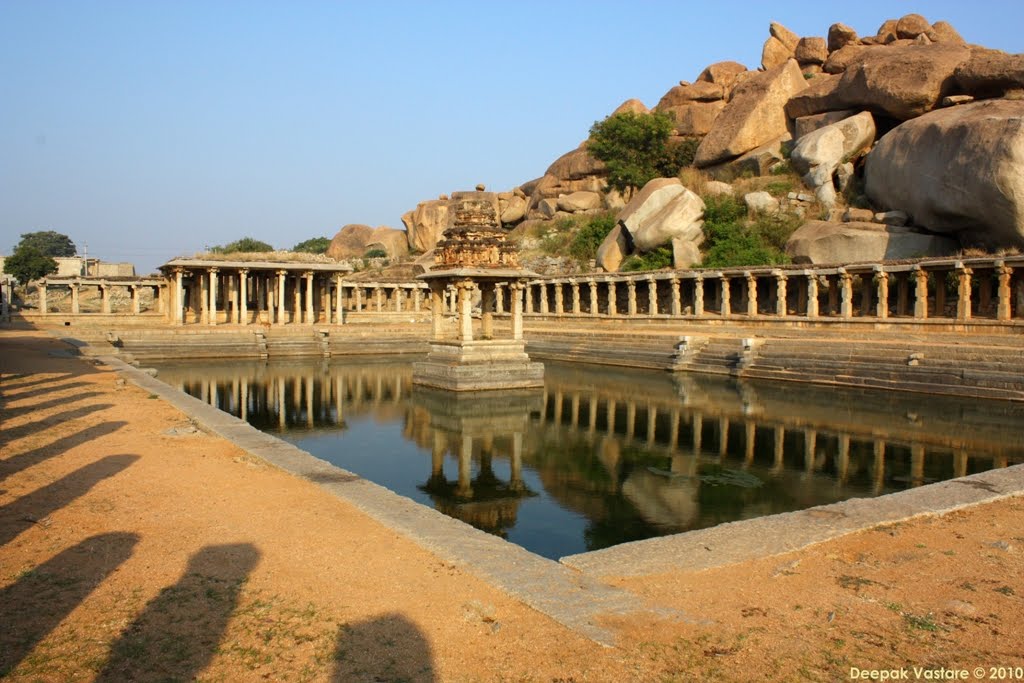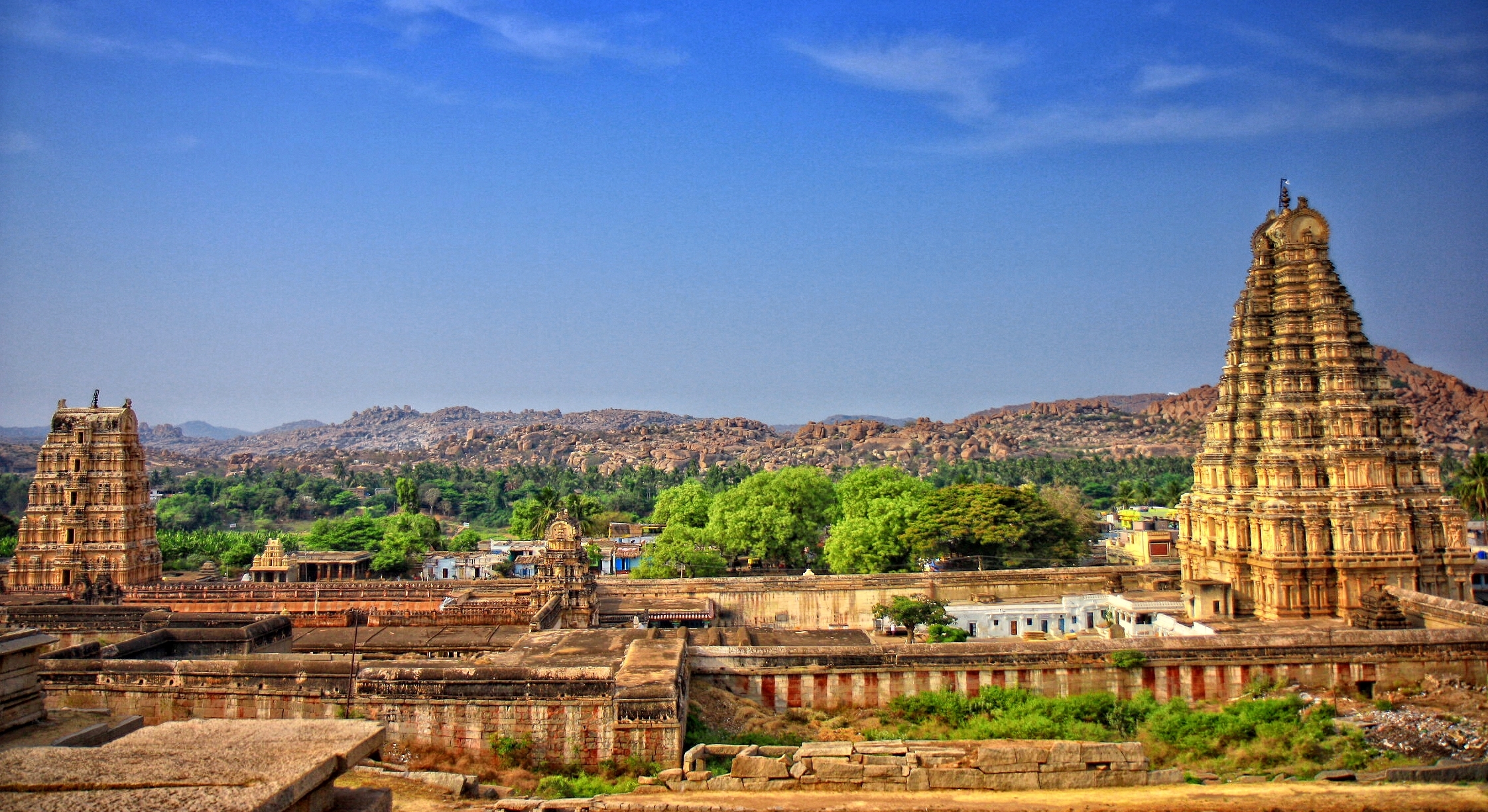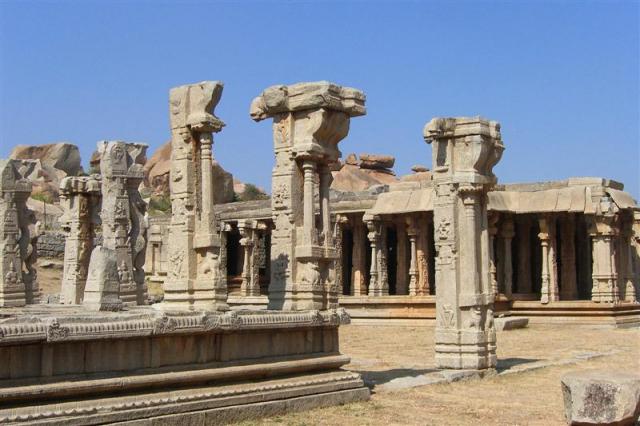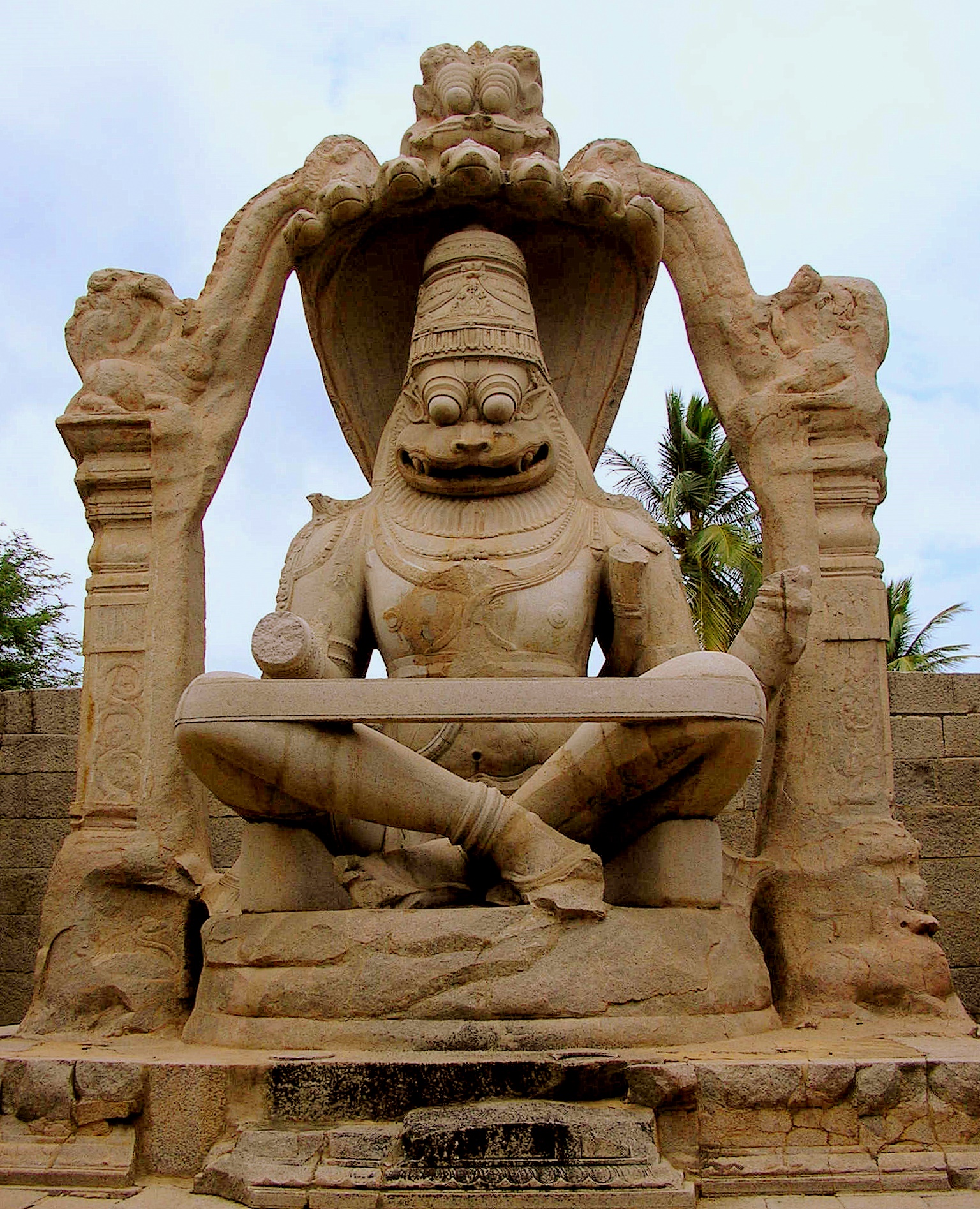Hampi,
General Information
District:KoppalState:KarnatakaCountry:IndiaArea:26 Sq. Km.Language Spoken:Kannada and EnglishLong Distance Code:+91-8394Importance:Ruins of Vijayanagar capital and its ancient temples.Best Time To Visit:October to MarchDescription:
Hampi was once the glorious capital of mighty Vijayanagara Empire (1336-1565), from the Deccan Plateau to the tip of the Peninsula. Founded in the middle of the 14th century by two local princes, Hukka & Bukka, the Vijayanagara Empire came to be celebrated for its might and wealth and as a showpiece of imperial magnificence. The emperors of this dynasty were great patrons of art and architecture, which can still be seen in the vast ruins of Hampi. In an effort to resurrect this abandoned capital, the government has been involved in the restoration, excavation and protection of the ruins, which spread over an area of 26 sq. km. Rocky hills and the mighty Tungabhadra River, which flows through this rugged landscape, dominate the terrain.Location:
Hampi is located in the central part of the state of Karnataka, in the southern part of India. It is 353 km from Bangalore, and 13 km from Hospet. It is located on top of a rugged terrain and is 467 m above sea level. Tungabhadra River flows through Hampi. It has a tropical climate with hot summers (April-June), and cool winters (October-February). It experiences the southwestern monsoon rains from June to August.
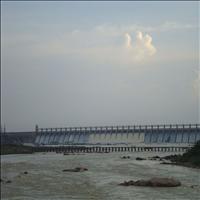 This dam is 17 Km from Hampi. The site of the dam built across the Tungabhadra river lies 15 Km from Hospet. The high masonry dam is about 590m Long and 49 m. high. The reservoir has a storage capacity of 132,559 million cubic feet of water spread over an area of 379 sq. km.
This dam is 17 Km from Hampi. The site of the dam built across the Tungabhadra river lies 15 Km from Hospet. The high masonry dam is about 590m Long and 49 m. high. The reservoir has a storage capacity of 132,559 million cubic feet of water spread over an area of 379 sq. km.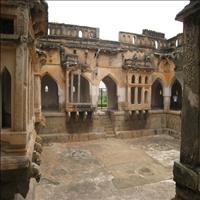 The Queen's Bath looks rather block-like from the outside. Inside, however, gallery-verandas, with overhanging Rajasthani balconies, encircle a 15-metre square bath. Once, cool, perfumed water poured in a minor waterfall at one side and flowed out through an underground drain. The bath, though carefully shielded on all sides, was open to the sky. It was a celebration of the good life, which, in many ways, was the leitmotif of Hampi.
The Queen's Bath looks rather block-like from the outside. Inside, however, gallery-verandas, with overhanging Rajasthani balconies, encircle a 15-metre square bath. Once, cool, perfumed water poured in a minor waterfall at one side and flowed out through an underground drain. The bath, though carefully shielded on all sides, was open to the sky. It was a celebration of the good life, which, in many ways, was the leitmotif of Hampi.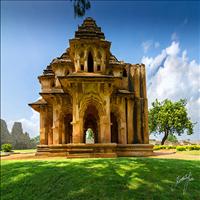 Near the Hazara Ram Temple, in the walled area of zenana (women's quarters), there is an exquisite pavilion called the Lotus Palace. It is believed that the women of the royal family who lived in the nearby Queens' Palace disported themselves in the water pavilion within their protected enclosure and met in the Lotus Palace. Its inflicted arches are particularly intriguing. This palace is a blend of Indo-Islamic architecture and gets its name from the lotus bud carved on its domed and vaulted ceiling. The Mughal monuments in Agra, built a century later, show modified variations of such features.
Near the Hazara Ram Temple, in the walled area of zenana (women's quarters), there is an exquisite pavilion called the Lotus Palace. It is believed that the women of the royal family who lived in the nearby Queens' Palace disported themselves in the water pavilion within their protected enclosure and met in the Lotus Palace. Its inflicted arches are particularly intriguing. This palace is a blend of Indo-Islamic architecture and gets its name from the lotus bud carved on its domed and vaulted ceiling. The Mughal monuments in Agra, built a century later, show modified variations of such features.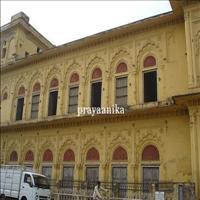 The Archaeological Museum at Kamalapuram (a small village adjoining Hampi) has a good collection of sculptures belonging to the Vijayanagar Empire. The museum is open from 10 a.m. to 5 p.m., and closed on Fridays. There is no entry ticket.
The Archaeological Museum at Kamalapuram (a small village adjoining Hampi) has a good collection of sculptures belonging to the Vijayanagar Empire. The museum is open from 10 a.m. to 5 p.m., and closed on Fridays. There is no entry ticket.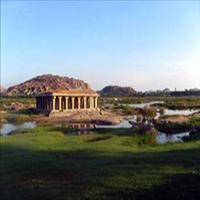 Apart from the Hampi Bazaar and the Royal Centre, Anegondi is another place worth visiting. It is a fortified area north of Hampi Bazaar across the Tungabhadra River. There are a number of temples in and around Anegondi.
Apart from the Hampi Bazaar and the Royal Centre, Anegondi is another place worth visiting. It is a fortified area north of Hampi Bazaar across the Tungabhadra River. There are a number of temples in and around Anegondi.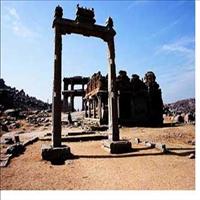 It was built when Krishnadeva Raja came back from his victorious expedition against the King of Orissa. The spaces between the rows of the plinth-moldings here are most elaborately and elegantly carved. The kings of Vijayanagar used to sit on a grand throne in the House of Victory and witness the nine-day Dasahara festival. Westwards from the House of Victory, leading through two ruined gates, the path leads to the Hazara Ramaswami temple. This temple is believed to have been the private place of worship of the royal family. The chief attraction of the temple is the series of scenes from the Ramayana carved on two of the inside walls of the mantapa. The genesis of the place known today as Hampi dates back to the age of the Hindu epic Ramayana when it was the site of Kishkinda, a monkey kingdom.
It was built when Krishnadeva Raja came back from his victorious expedition against the King of Orissa. The spaces between the rows of the plinth-moldings here are most elaborately and elegantly carved. The kings of Vijayanagar used to sit on a grand throne in the House of Victory and witness the nine-day Dasahara festival. Westwards from the House of Victory, leading through two ruined gates, the path leads to the Hazara Ramaswami temple. This temple is believed to have been the private place of worship of the royal family. The chief attraction of the temple is the series of scenes from the Ramayana carved on two of the inside walls of the mantapa. The genesis of the place known today as Hampi dates back to the age of the Hindu epic Ramayana when it was the site of Kishkinda, a monkey kingdom.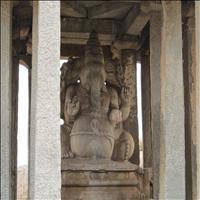 This is a 9 feet tall single stone statue, which is also known as Sasivikalu Ganesha.
This is a 9 feet tall single stone statue, which is also known as Sasivikalu Ganesha.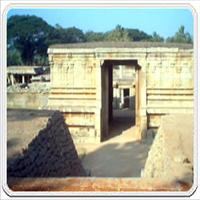 This place was recently discovered and they suspect this was for aristocrats and high-ranking officials.
This place was recently discovered and they suspect this was for aristocrats and high-ranking officials.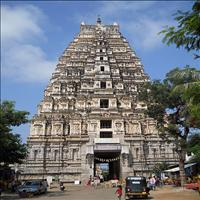 The 15th-century Virupaksha Temple is located in the Hampi Bazaar area. It is one of the oldest monuments of the town. The top of the temple rises about 50 m from the ground and the main shrine is dedicated to Virupaksha, a form of Lord Shiva.
The 15th-century Virupaksha Temple is located in the Hampi Bazaar area. It is one of the oldest monuments of the town. The top of the temple rises about 50 m from the ground and the main shrine is dedicated to Virupaksha, a form of Lord Shiva. The Virupaksha is also called the Pampapati. While the construction belongs to the later Vijayanagar period, there are many shrines inside the temple that are much older. At the eastern end, there is the large Nandi in stone; on the southern side is the larger-than-life Ganesha. Large single stone carvings seem to have been the fashion of the day in Hampi, for there is a large image of Narasimha (6.7 m high), the half-lion half-man incarnation of God, as well as a huge linga. This phallic symbol now has its base in water.
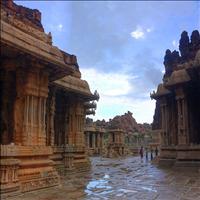 Two kilometers east of Hampi Bazaar, the traveller can see the Vittal Temple, built in the 16th century, and now a World Heritage monument. The carvings on this temple give an insight into the architectural splendour achieved by the artisans of Vijayanagar Empire. In the Vittal Temple, the columns are so balanced that they have a musical quality.
Two kilometers east of Hampi Bazaar, the traveller can see the Vittal Temple, built in the 16th century, and now a World Heritage monument. The carvings on this temple give an insight into the architectural splendour achieved by the artisans of Vijayanagar Empire. In the Vittal Temple, the columns are so balanced that they have a musical quality.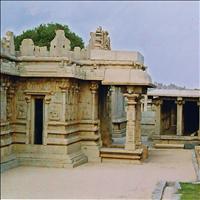 The Hazara Rama Temple was perhaps the king's private shrine and contains some exceptional carvings and murals both within and on the outer walls. The outer friezes show horses, elephants, dancing girls and infantry in procession, while the inner panels depict individual deities or scenes from the Ramayana. There is a garuda (hawk-like bird) with multiple wings, which is the most striking of them all.
The Hazara Rama Temple was perhaps the king's private shrine and contains some exceptional carvings and murals both within and on the outer walls. The outer friezes show horses, elephants, dancing girls and infantry in procession, while the inner panels depict individual deities or scenes from the Ramayana. There is a garuda (hawk-like bird) with multiple wings, which is the most striking of them all.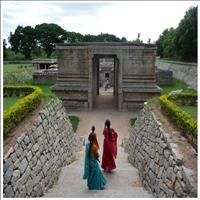 The Underground Virupaksha temple, built in 1442, is another important place to visit within the royal center. It is one of the earliest structures in the city. The temple is devoted to Lord Virupaksha, a form of Shiva.
The Underground Virupaksha temple, built in 1442, is another important place to visit within the royal center. It is one of the earliest structures in the city. The temple is devoted to Lord Virupaksha, a form of Shiva.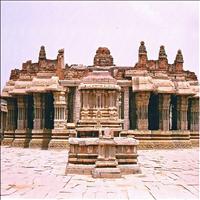 The most splendid monument of Hampi is undoubtedly the Vithala Temple Complex with its 56 musical pillars. To the east of the hall is the famous Stone Chariot with stone wheels that actually revolve. In front of the shrine stands the great mantapa. Resting on a richly sculpted basement, huge pillars of granite support its roof, about 15 feet in height, each consisting of a central pillar surrounded by detached shafts, all cut from one single block of stone. Several of the carved pillars were attacked with such fury that they are hardly more than shapeless blocks of stones and a large portion of the central part has been destroyed utterly.
The most splendid monument of Hampi is undoubtedly the Vithala Temple Complex with its 56 musical pillars. To the east of the hall is the famous Stone Chariot with stone wheels that actually revolve. In front of the shrine stands the great mantapa. Resting on a richly sculpted basement, huge pillars of granite support its roof, about 15 feet in height, each consisting of a central pillar surrounded by detached shafts, all cut from one single block of stone. Several of the carved pillars were attacked with such fury that they are hardly more than shapeless blocks of stones and a large portion of the central part has been destroyed utterly.abc
Timings: Sun-rise to Sun-set
Remarks: UNESCO WORLD HERITAGE SITE
Timings: Sun-rise to Sun-set
Remarks: UNESCO WORLD HERITAGE SITE
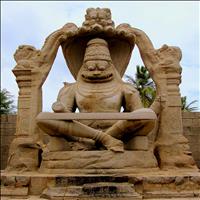 Hampi ( a.k.a Humpi or Hampe ) is both a historic & relegious place in India. This was the capital of the Hindu empire,Vijayanagara, who ruled the south India during 14th to 16th century AD.The ruins of Hampi, as it is known today, is a vast open museum of history, architecture and religion .Spread over an area more than 25 square kilometers (10 square miles), Hampi ruins is packed with giant temples, palaces, market streets, aquatic structures , fortifications and an abundance of other ancient monuments.The giant boulder strewn hills and the river that bisects make a bizarre landscape for this ancient metropolis. Together with its historic and mythological residues this rural area makes a perfect tourist spot. Hampi is in the list of UNESCO’s World Heritage sites.
Hampi ( a.k.a Humpi or Hampe ) is both a historic & relegious place in India. This was the capital of the Hindu empire,Vijayanagara, who ruled the south India during 14th to 16th century AD.The ruins of Hampi, as it is known today, is a vast open museum of history, architecture and religion .Spread over an area more than 25 square kilometers (10 square miles), Hampi ruins is packed with giant temples, palaces, market streets, aquatic structures , fortifications and an abundance of other ancient monuments.The giant boulder strewn hills and the river that bisects make a bizarre landscape for this ancient metropolis. Together with its historic and mythological residues this rural area makes a perfect tourist spot. Hampi is in the list of UNESCO’s World Heritage sites.